Red (and infrared) light therapy is an active and well studied scientific field, dubbed the ‘photosynthesis of humans’. Also known as; photobiomodulation, LLLT, led therapy and others – light therapy seems to have a broad range of applications. It supports general health, but also treats various conditions.
It’s not only humans that benefit though, with animals of all types being studied. Lab rats/mice are studied by far the most, with dogs, horses and others receiving a lot of attention too.
Contents
List of animals
Mechanism of light therapy
Animal light therapy guidelines
References
Animals proven to respond well to red light
The effects of red light on biology has been studied across a wide range of animals, and has been integrated into veterinary practices for decades.
While the exact specifics of treatment (dose, wavelength, protocol) aren’t fully agreed on yet, below are 12 different animals proven to respond positively to light therapy:
-
Chicken / hens
Red light actually seems essential to egg producing hens, as studies[1] implicate it in activating the reproductive axis. Hens under red light produce eggs earlier, and then more, for longer, than hens without red wavelengths of light.
Other studies on broiler (meat) chicken[2] shows a similar health benefit – the chickens reared under red light saw most growth of their body and had the least movement problems..
-
Cows
Dairy cows can suffer from various issues that prevent optimal milk production. Various studies [3][4] have been done using red light to treat wounded teats in dairy cattle. The studies noted significant improvement in the healing process, including less inflammation and faster skin regeneration. The cows can get back to producing healthy milk sooner.
-
Dogs
Dogs are one of the most well studied animals in light therapy studies. Only rats are more well studied.
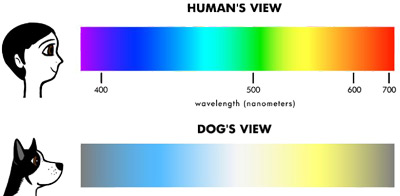
The variety of issues looked at include; healing after heart attacks, hair regrowth, recovery after surgery of the spine, chronic wound healing and a lot more [5-8]. Much like in human studies, the results seem positive over a wide range of conditions & doses. Light therapy may be useful for all common dog skin issues and for areas of acute and chronic pain. Canine light therapy treatment by vets is increasing in popularity, as is at-home treatment.
-
Ducks
Ducks seem to respond positively to red light much like chickens – with better growth and weight, better movement and signs of vitaltiy [9]. Blue light seems to be harmful to ducks, much like how it can be for humans and other animals. Unlike other studies of light therapy, these duck and chicken studies use constant light exposure rather than segmented therapy sessions. They have positive results nonetheless.
-
Geese
Mirroring the duck and chicken results, geese seem to benefit from red only light exposure. One recent randomised study [10] showed big benefits to reproductive function / egg production. The geese under red LEDs had longer laying periods and higher total egg numbers (compared to white or blue LEDs).
-
Hamster
Hamsters are very well studied in the light therapy field, much like rats and mice. A wide variety of studies point to anit-inflammatory effects, such as in mouth ulcers[11], which heal faster and with less pain with hamsters undergoing red light therapy and also things like surgically induced wounds which heal much faster with red light compared to controls[12].
-
Horses
Horses have received a lot of attention with red light therapy. Typically referred to as ‘equine light therapy’, various vets and professionals use red lasers/LEDs for treating a wide range of common horse problems. A lot of the literature looks at chronic pain in horses[13], which is surprisingly common in older horses. Treating the problematic area directly seems to be greatly beneficial over time. Like in other animals, wound healing is an easily studied area[14]. Again, skin wounds of all types in the body of horses heals faster than controls in studies.
-
Pigs
Pigs are fairly well studied in the light therapy literature. A recent study [15] looked specifically at the systemic effects of light therapy on pigs – a study that potentially translates to dogs, humans and other animals. The scientists applied red light to the bone marrow of a pig’s leg shortly after a full-on heart attack, which in turn was shown to improve heart function and reduce scarring. Red light can also be used to heal skin in pigs[16] following damage, in addition to various other problems.
-
Rabbits
Red LEDs have been shown to, amongst other things, prevent osteoarthritis in rabbits to some extent[17], even when used in low doses for only 10 mins a day. Much like in pigs and humans, there is evidence of a broader systemic effect in rabbits from appropriate red light exposure. A study[18] showed that red light into the mouth following implant surgery (which is shown to heal gums and bones in the mouth) actually boosts thyroid hormone production, ultimately leading to a broad beneficial effect across the entire body.
-
Reptiles
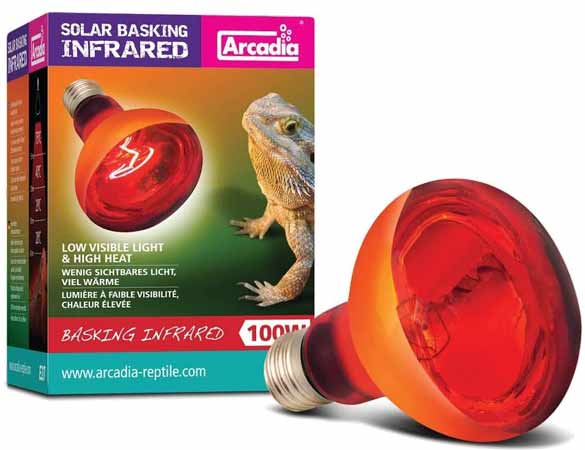
-
Snails
Even stranger types of animals such as molluscs seem to benefit from red light, with basic studies[20] confirming that snails and slugs all love red light, migrating towards it over other colours.
-
Worms
Various studies have been done on red light exposure with worms[21]. Much like other small animals, constant exposure to low levels of red light seems beneficial and improves worm casting production rate more than other colours of light. Worms also seem very comfortable under red light, just as comfortable as if they were in pure darkness. See more: https://redlightman.com/blog/red-light-doubles-vermicompost-rate/
All animals can potentially benefit: the mechanism
So many other animals are proven to benefit from light, ranging from cats to fish. There may be exceptions, but it seems that all life fundamentally benefits from red/infrared light (in the right strength, dose, wavelength, etc.).
 Light in mitochondria
Light in mitochondria
Light in the wavelengths of 600-1000nm interacts with mitochondria in cells, increasing oxidative metabolism (converting carbohydrates+oxygen into energy). This process of energy generation in our cells is fundamental to life, including all animal and plant life. Red light works by interacting with a respiratory protein called cytochrome c oxidase (found in basically all species), allowing it to use oxygen better. This has a downstream effect on the entire function and structure of our body.
Size matters (and fur)
The exact optimal treatment parameters may be slightly different across species, and the potential benefit may be different across species too (light can easily get into a rat’s brain, but may require 50x stronger light to reach an elephant’s). Fur and hair will obviously block the passage of red light too, so animals with thicker and darker fur will need longer or closer exposure. The fact remains however, that appropriate exposure to red light can be beneficial for us, our pets, and even our farm animals.
Animal light therapy in practice
Most mammals will respond to light therapy in a very similar way to us humans. The same devices are effective and similar treatment protocols should be used (such as 10 minutes exposure 3x a week). Very small animals such as mice will obviously need less intense exposure to light, while larger animals likely benefit from proportionally higher quantities of light.
-
Red light for small animals
Results on small animals such as worms, mice, and poultry show that constant day-long exposure to low levels of red light can be a valid & beneficial procotol. This is in addition to the typically short, but more intense, therapy sessions seen in laser/LED therapy and most clinical studies. If you have a small animal, you could consider using your normal therapy device but from slightly further away. Farms could try switching their standard lighting to red only.
-
Red light for large animals
Larger animals are more problematic for light therapy, as light cannot penetrate deeply into their body. Nevertheless, treatment on things such as wounds, skin infections/rash, teeth, eczema, joint problems and other surface issues is going to help, if used correctly. Essentially you could use the same therapy devices that you use on yourself, but with an increased treatment time or from a closer distance.
-
Red light for household pets
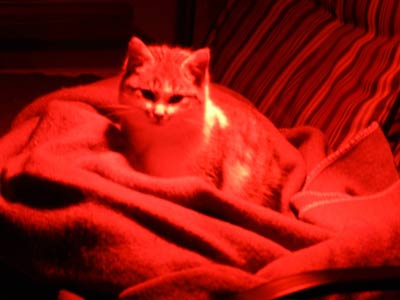
If you have a pet, the same light therapy devices you use for yourself could also be used on them, treating a problem or simply optimising their general health/vitality. Fortunately, most dogs and cats seem perfectly happy around (infra)red LED/laser light as the low heat output is comfortable, and their eyes aren’t particularly sensitive to red wavelengths. Any pain-free and side-effect free treatment that you can do at home and includes lots of close attention from you, will no doubt be adored by your pets.
Recommended Light Devices
References
- Red light is necessary to activate the reproductive axis in chickens independently of the retina of the eye. Baxter M. 2014.
- The effects of color and intensity of light on behavior and leg disorders in broiler chickens. Prayitno DS. 1997.
- Evaluation of low level laser therapy on primary healing of experimentally induced full thickness teat wounds in dairy cattle. Ghamsari SM. 1997.
- Histopathological effect of low-level laser therapy on sutured wounds of the teat in dairy cattle. Ghamsari SM. 1996.
- Attenuation of infarct size in rats and dogs after myocardial infarction by low-energy laser irradiation. Oron U. 2001.
- Efficacy of low-level laser therapy on hair regrowth in dogs with noninflammatory alopecia: a pilot study. Olivieri L. 2015.
- Low-level laser therapy reduces time to ambulation in dogs after hemilaminectomy: a preliminary study. Draper WE. 2012.
- Low-intensity laser light-induced closure of a chronic wound in a dog. Lucroy MD. 1999.
- Effects of different wavelengths of light on the biology, behavior, and production of grow-out Pekin ducks. Campbell CL. 2015.
- Effect of Monochromic LED Light of Each Different Color on the Growth and Reproductive Performances of Breeder Geese. Chang SC. 2015.
- Effects of low-level laser therapy on collagen expression and neutrophil infiltrate in 5-fluorouracil-induced oral mucositis in hamsters. Lopes NN. 2010.
- Effect of Low Level Laser Therapy on the Surgical Wound Healing in Hamsters. Neda Nasirian. 2012.
- Treatment of chronic back pain in horses. Stimulation of acupuncture points with a low powered infrared laser. Martin BB Jr. 1987.
- Equine wound healing: influence of low level laser therapy on an equine metacarpal wound healing model. Jann. 2012.
- Low-Level Laser Therapy to the Bone Marrow Reduces Scarring and Improves Heart Function Post-Acute Myocardial Infarction in the Pig. Blatt A. 2016.
- Prevention of X-ray-induced late dermal necrosis in the pig by treatment with multi-wavelength light. Rezvani M. 1992.
- Effect of light-emitting diode (LED) therapy on the development of osteoarthritis (OA) in a rabbit model. Oshima Y. 2011.
- Mayer, L. (2013) Assessment of LLLT systemic effects on thyroid hormones function after dental titanium implant installation: An experimental rabbit model.
- Effect of laser treatment on first-intention incisional wound healing in ball pythons (Python regius). Cole GL. 2015.
- Snails can see colour – British student discovers they particularly like red. Daily Mail. 2014.
- Effects of light colour and oscillator frequency on earthworm bioactivity. Owo. 2008.

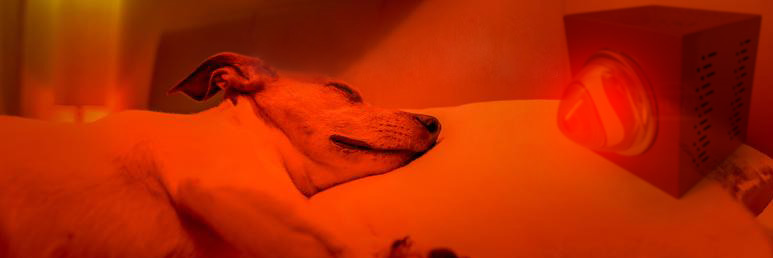
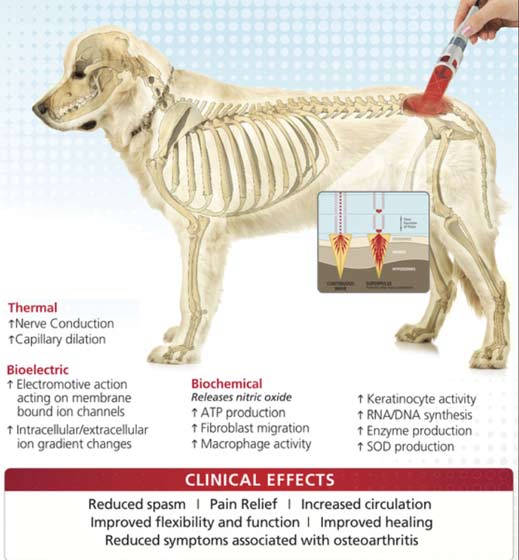 Light in mitochondria
Light in mitochondria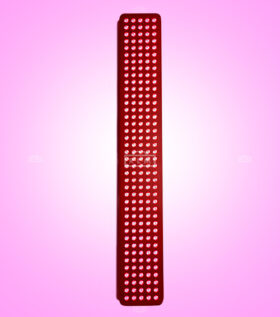
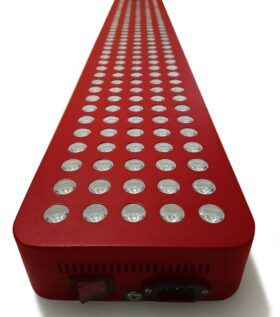
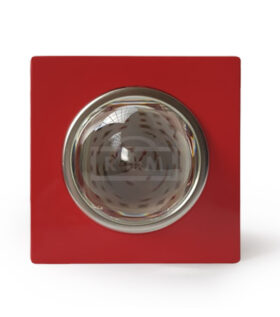
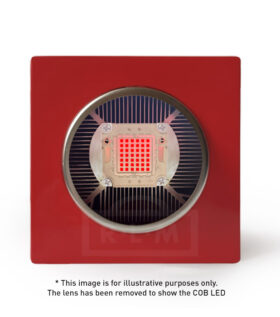
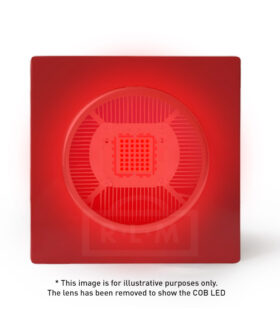
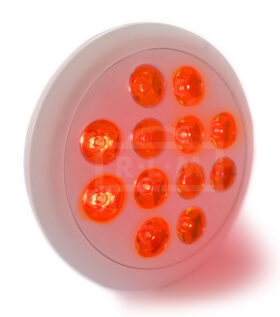
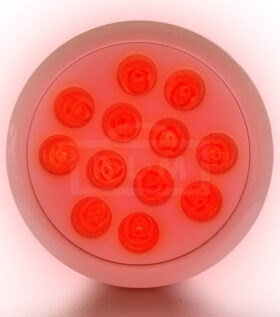
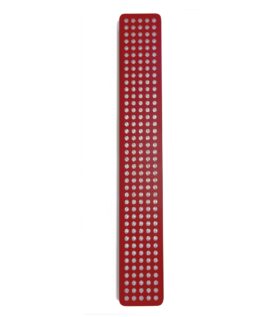
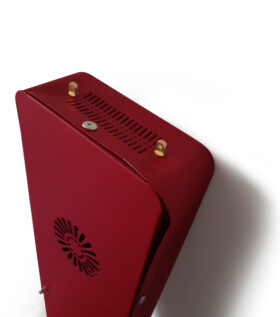
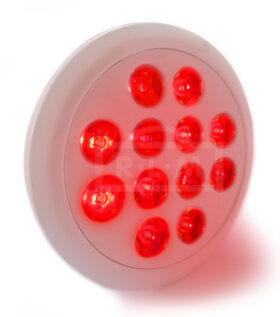
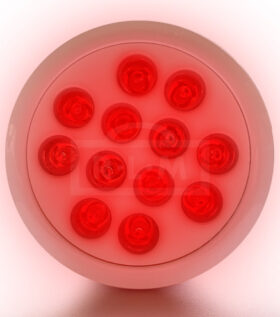
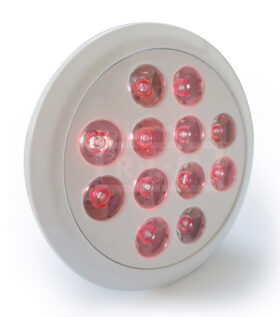
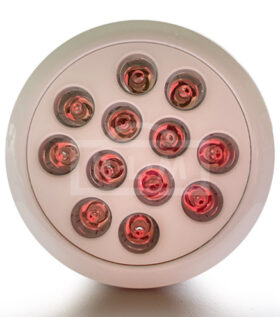
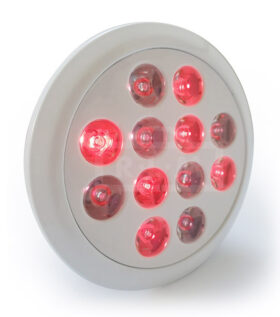
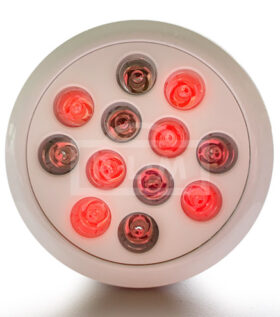
I’ve always wondered about the fur issue. I’ve tried using my red light on my dog but he has long thick fur. I gave up because I could not see how to get around this . I’ve shaved the area and still difficult to tell if it was helping him. He has osteo arthritis and joint issues.
Shaving the area is worth considering for maximum effect. Thick black fur can literally block 95% of light. Daily shaving can get to be too much work though, so I recommend just pressing the device directly on the body and using for a longer session time, pushing it around gently in a massage type motion to move the hair.
If red light isn’t helping much for those issues, I would suggest trying infrared light instead, which has better penetration.
Hi! Wonderful info here! What for a ferret? How long of a session and how close if I get the 850nm range light? If not 850, will 650 range work? Thank you!..:).
Robyn
Thanks Joe!
I did try to shave him but I’m not sure if it was any help. I have a device that has infrared and red light-I can use either or both. I was using both at the time. I’ll try again to see if it helps. So difficult since he can’t talk I can only measure progress by visual results.
Ah fair enough then and no worries. The only other thing I can suggest is figuring out the light device’s power density and watt consumption, just to be sure that you are applying enough total energy – we have a post on it here: https://redlightman.com/blog/complete-guide-light-therapy-dosing/
All the best with your little guy, I hope he recovers from those painful joints. I will be making a post on human/animal arthritis soon so stay tuned.
Here is the information on arthritis – https://redlightman.com/blog/light-therapy-improves-arthritis-dramatically/
I’ve wondered if it would be a good thing for my cats, considering how they soak up as much sun as they possibly can (which seems telling for us humans who don’t get much).
I suppose cats like warmth, whether it’s from sunlight or just an indoor heater. From that perspective they’ll enjoy light therapy. As far as I know, cats don’t produce vitamin D in their skin (unlike us humans) so they aren’t sunbathing for that.
I think red light may be more suitable for some cats than others, depending on fur thickness and colour.
I have a hybrid cat a savannh who suffers from skin problems I have a red light for the face I got at Nordstroms and it works great on me but will it help heal the wounds he gets from licking and scratching. And how far back should I hold it?
Hi Kelly,
You need to know the light intensity (power density) measurement to determine how close to hold it. In general you need to use it a bit closer on dogs/cats compared to on us humans (because their fur blocks more of the light).
Fascinating. I noticed my dog loves sun bathing and he has a beautiful coat. Could have to do with the effect of the red spectrum on hair growth.
Yes most likely. I know cats/dogs don’t produce vitamin D in their skin so their main benefit from sunlight will be the red light.
I use the infra-red light on my Dachsund who has imobile hind legs. He has the usual fur of a dachsund ( short and stubby) How far should I hold the light from his body? I feel I must hold it very close to his body but scared that it will burn the skin. Please advise. Thank you.
Sir, you have not mentioned one word about the seriousness of infrared light causing CATARACTS. In lab tests 10 minutes exposure at 10 inches away produced cataracts/retinal damage to rabbits. I got a heat lamp /250 red infrared bulbs for my feral cats but am now afraid to use it or even be around it for myself
That’s because the near infrared light in the light therapy range (700-900nm) does not cause cataracts. In fact it prevents them. It is actually useful for a wide range of eye issues, such as retinal damage, glaucoma, AMD, trauma, etc. It is extremely well studied for all of these purposes.
You have to be more specific about the different types of infrared. ‘Infrared’ is a vague term that refers to a wide range of wavelengths – it starts at about 700nm and goes up to 1000000nm. These do not all have the same effect or properties, so the term infrared is not useful. Infrared in the context of light therapy only refers to the very first wavelengths on the bottom border of near infrared. These light therapy wavelengths at the lower end near 700nm-900nm are similar to visible light. The wavelengths from about 1000nm to 1000000nm are basically heat.
What you are using is not a light therapy device. Heat lamps are not light therapy – it is just heat. There might be some overlapping wavelengths at the bottom of their spectrum but the heating of the skin/eyes will negate any potential metabolic benefits. I do not recommend using heat lamps on the body or face. Thermal infrared (1000nm+) is mainly absorbed by water molecules in the skin/eyes and can over time cause skin aging, eye damage, etc.
If you want to pursue actual light therapy with no risks, then you need an LED based device.
Hi! I’m a fan and a customer, thanks to Health & Wellbeing Greenville. I just bought the Infrared 830 device hoping to help my doggie who’s been diagnosed hypothyroid and with a possible brain lesion. She has black, thin fur on her head. Is there such a thing as too much red light therapy for her? I saw your reply that thick, black fur can block 95% of the light. Would aiming for her non-furry zones be more therapeutic to rev up mitochondria and quell inflammation?
I don’t think it is necessary to go for hours per day. Hair will block the light, so if you want to target cells in one specific area with a lot of fur, you will need longer session times. Areas with thin or less fur will need relatively shorter session times. The ‘therapeutic’ potential should be the same, assuming you adjust the session time to match the hair density.
My dog has injured his knee ligament, I am reluctant to go for the surgery option straight away. I have read about helping/ healing with red light but I am unsure which one will be the best option. Thanks
Hi – My dog has allergies and has been licking her paws to the point that they are raw. She is also scratching around her chest, mouth, chin and a bit around her eyes. Should I use a red light or infrared light for her? And which spectrum? And is it okay to use around her mouth, chin and around her eyes? She is 18 lbs and generally has thick fur, but right now her fur is thinner due to the allergies. Thanks in advance!
I don’t think light therapy is considered a first-line therapy for treatment of severe allergy issues.
There is a lot of data for the treatment of inflammation so I think it is worth a try at the very least.
I would suggest a 670nm light for use around the eyes and mucous membranes like the mouth.
Go to a homeopathic vet. Not holistic, homeopathic, big difference. Find a classical homeopathic vet, you can do consult over phone, Ive seen nothing but miracles constantly for over 30 years, using homeopathy on animals and pple. I’m talking abt acute, first aid and deep chronic illness, which is what allergies are reflecting in your dogs body.
I have a cat with long fur who has kidney disease or the beginning of the disease. My question is that I saw where vets had been treating a cat with fur and seemed to use what looked like water to slide the fur back. Is this correct thing to do to help prevent the fur from interfering with the red light penetration?
Yes. Either shaving the treatment area or somehow brushing the hair to the side is required for light therapy. If water works with the fur to hold it back temporarily then it is fine.
Hi, i was wondering if it was possible to get a hanging lamp that could be used for cats. I have 20 rescue cats with multiple ailments and i would love to get a lamp to help them. I was reading up[ on the red lamps and some are saying that goggles have to be worn to protect eyes so how can i use it with cats and dogs? is there a special one for cats and dogs? I would love to get a lamp on a stand or one that i can hang above a specific bed/cage to make sure that individual cats get there 10-20 mins of light…..Is this possible please? xoxo tania and all the babies too.
Will RED light help diminish fatty tumors in dogs?
From what I have read (and I am in course for laser therapy on animals) you should not do laser therapy for cancer because it stimulates cell growth. So you do not want to stimulate the growth of cancer cells.
There is insufficient evidence to conclusively state that as a proven fact. You could say the same thing about any aspect of life – don’t eat food because it stimulates cancer cell growth, don’t breath air because oxygen stimulates cancer cell growth. Don’t exercise because the blood flow stimulates cancer cell growth.
Current research on cancer and light therapy is mixed. While some short term studies may show a cell growth initially, other studies show that light therapy may work against the causes and progression of cancer in the long term.
Sort of like how exercise makes your muscles tired in the short term, but stronger in the long term. A seemingly negative short term symptom leads to a favourable long term result.
Light therapy is well proven as an additional therapy for things like hair loss, skin wounds and ulcers – common symptoms from conventional cancer treatments. As for a direct cancer treatment…maybe not at the moment, but don’t rule it out until there is more research.
Hi, my cat has arthritis. Would it matter which lamp to use for this condition? 660/670/880? Many thanks
An 830nm light is the most suitable: https://redlightman.com/product/infrared-830-device/
Also, consider shaving the fur in the area (they do in all of the studies because fur will block the light) or using the light from a position where the fur won’t block it.
Will any standard reptile basking light, such as the one pictured in your article (and/ or the Aqua Culture brand 75W red reptile bulb found in many stores), have the optimal 600-1000 nm wavelength range?